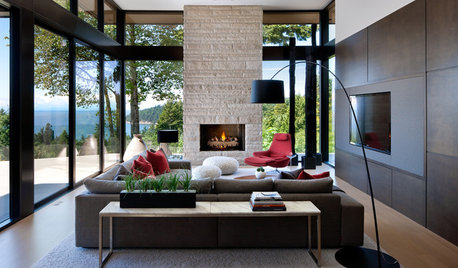Structure question
marylandmojo
13 years ago
Related Stories

REMODELING GUIDESConsidering a Fixer-Upper? 15 Questions to Ask First
Learn about the hidden costs and treasures of older homes to avoid budget surprises and accidentally tossing valuable features
Full Story
REMODELING GUIDESSurvive Your Home Remodel: 11 Must-Ask Questions
Plan ahead to keep minor hassles from turning into major headaches during an extensive renovation
Full Story
MOST POPULAR8 Questions to Ask Yourself Before Meeting With Your Designer
Thinking in advance about how you use your space will get your first design consultation off to its best start
Full Story
MOVINGHiring a Home Inspector? Ask These 10 Questions
How to make sure the pro who performs your home inspection is properly qualified and insured, so you can protect your big investment
Full Story
DOORS5 Questions to Ask Before Installing a Barn Door
Find out whether that barn door you love is the right solution for your space
Full Story
FEEL-GOOD HOMEThe Question That Can Make You Love Your Home More
Change your relationship with your house for the better by focusing on the answer to something designers often ask
Full Story
WORKING WITH PROS12 Questions Your Interior Designer Should Ask You
The best decorators aren’t dictators — and they’re not mind readers either. To understand your tastes, they need this essential info
Full Story
WORKING WITH PROS10 Questions to Ask Potential Contractors
Ensure the right fit by interviewing general contractors about topics that go beyond the basics
Full Story
WORKING WITH PROS9 Questions to Ask a Home Remodeler Before You Meet
Save time and effort by ruling out deal breakers with your contractor before an in-person session
Full Story
GREEN DECORATING8 Questions to Help You See Through Green Hype
With the ecofriendly bandwagon picking up some dubious passengers, here's how to tell truly green products and services from the imposters
Full StoryMore Discussions







lazy_gardens
marylandmojoOriginal Author
Related Professionals
Clemson Landscape Architects & Landscape Designers · South Orange Landscape Architects & Landscape Designers · Forest City Landscape Architects & Landscape Designers · Waterbury Landscape Contractors · Azalea Park Landscape Contractors · Brownsville Landscape Contractors · East Patchogue Landscape Contractors · La Vista Landscape Contractors · Leicester Landscape Contractors · Monterey Landscape Contractors · Oak Forest Landscape Contractors · Parker Landscape Contractors · Watertown Landscape Contractors · Fort Lee Solar Energy Systems · Mill Valley Solar Energy Systemsdcarch7 d c f l a s h 7 @ y a h o o . c o m
polcat
marylandmojoOriginal Author
chadinlg Zone 9b Los Gatos CA
agardenstateof_mind
dcarch7 d c f l a s h 7 @ y a h o o . c o m